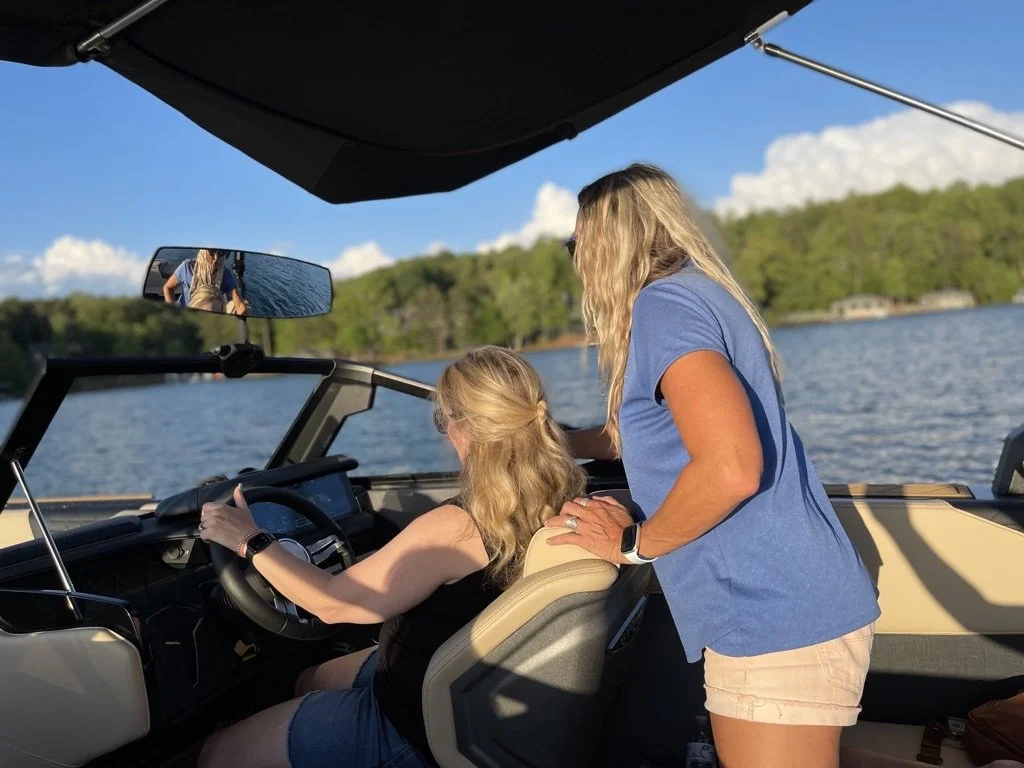How To Drive A Pontoon Boat
Driving a pontoon boat may sound overwhelming but it is easier than you might think. These boats are perfect for leisurely cruises, fishing trips, or hosting friends and family especially with small children. With a little bit of preparation and practice, you can start confidently navigating these boats in no time. Let’s understand the basics step-by-step.
Know the Water
You should familiarize yourself with the waterbody where you will be boating. It's best to check with local maps for shallow spots, underwater obstacles and strong currents. It is also important to follow the local boating laws as many areas require a boating license. Getting in contact with marinas in your surrounding area and simply asking for guidance from the locals who have experience to share what they have learned about the area over the years.
Get to Know Your Boat
Before starting off, you should familiarize yourself with the boat’s different controls and features. Learning how to use the throttle, steering, trim and dashboard gauges. If this is your first time driving a pontoon boat, you should ask your dealer for a demo or enroll yourself in pontoon driving lessons to get comfortable.
Safety First
Always make sure your boat is well-stocked with all the essential safety equipment, such as life jackets, fire extinguishers, a first aid kit, a throwable flotation device, etc. The U.S. Coast Guard offers resources to help you check what is required for your specific boat and state. Safety Equipment
Getting Started
To start the engine the safety lanyard must be attached, turn the battery on and you can lower the motor into the water. Make sure the throttle is in neutral and your intake which is usually above the prop is submerged in the water, then turn the key to start the engine. Once started you should see a stream of water coming out of the engine from the starboard side of the Outboard unit. Before placing your throttle into gear, look where your engine is pointing, to avoid having to try and make quick corrections. Now you can shift the throttle into the idle forward or Idle reverse gear to ease away from the dock/ slip.
(NOTE If you don't see water coming out of the Outboard unit, shut the motor off, raise the motor for inspection, pull out the safety lanyard and check the intakes to make sure they are not blocked /clogged by weeds. If that is not the case then call your dealer/mechanic to troubleshoot other possibilities. Without proper water flow your engine will not be able to cool, which could lead to engine failure which would be costly.)
On the Water
The throttle helps control your speed. Push light handed with gradual force forward to move ahead. Pontoons like all boats don’t have brakes. To stop, you must go into neutral first before placing the throttle into reverse. When done properly you could hear an audible change in the engine, some throttles make a “ click” sound or you can feel it “sit” into the neutral gear to let you know you have it in neutral before placing it into reverse to slow down or to come to a stop.
(NOTE if you fail to stop in neutral you risk damaging your transmission.. Think of it like driving a car and ask yourself “ Would i throw my car into reverse while driving forward?”) Hopefully the answer would be “ No!”
Pontoons sit higher on the water, while steering you should anticipate your movements beforehand. In windy weather conditions, you may need extra throttle to maintain control over your boat. The trim is used for adjusting the motor’s angle, improving efficiency and handling. You must practice trimming in open water to find the ideal setting for your boat. In shallow waters, you must raise the trim to protect the propeller from damage but not so much you risk the intake not being able to draw in water.
Docking Made Easy
While approaching the dock depending on the docking layout, you should always come in at a slow speed. If idle forward seems to be to fast for your comfort you can “ Feather the throttle” by simply taking the boat “ In and out “ of neutral as you approach the dock to help slow your speed. The goal is to dock using only your momentum , requiring only minimum reverse throttle to stop. ( NOTE before approaching the dock be sure to have your dock lines ready and let your passengers know to keep seated until instructed to assist you with docking)
Enjoy the Ride
Pontoon boats are designed for relaxation and fun. With a little practice, you can easily master the basics and enjoy the freedom of the water. Get in touch with Cathy Williams “The Confident Captain” to learn to drive a pontoon boat proficiently and confidently.

